
For SpaceUpClose.com & RocketSTEM
CAPE CANAVERAL, FL – China’s daring Chang’e-5 moon probe successfully brought back the first lunar soil and rock samples gathered from the surface in over four decades following a safe soft landing of the return capsule in a remote, snow covered region of Inner Mongolia, in northern China on Wednesday, Dec 16 – demonstrating a spectacular advancement in Chinese scientific and technological space capabilities voyaging to the Moon and back that rival those of the United States.
Following an ambitious, complex and fast paced 23-day round trip to the Moon and back the return capsule of China’s Chang’e-5 probe touched down on Earth in the early hours of Thursday, Dec 16, Beijing time (early afternoon US East Coast time), bringing back China’s first ever samples collected from the moon, as well as the world’s freshest lunar samples in over 40 years -since the Apollo and Luna missions from the US and Russia.
The approximately 660-pound (300-kilogram) Chang’e-5 lunar return capsule soft landed at 12:59 p.m. EST (1759 GMT) Wednesday, Dec. 16, or 1:59 a.m. Thursday, Dec. 17, (Beijing time) in Siziwang Banner, north China’s Inner Mongolia Autonomous Region – according to the China National Space Administration (CNSA)..
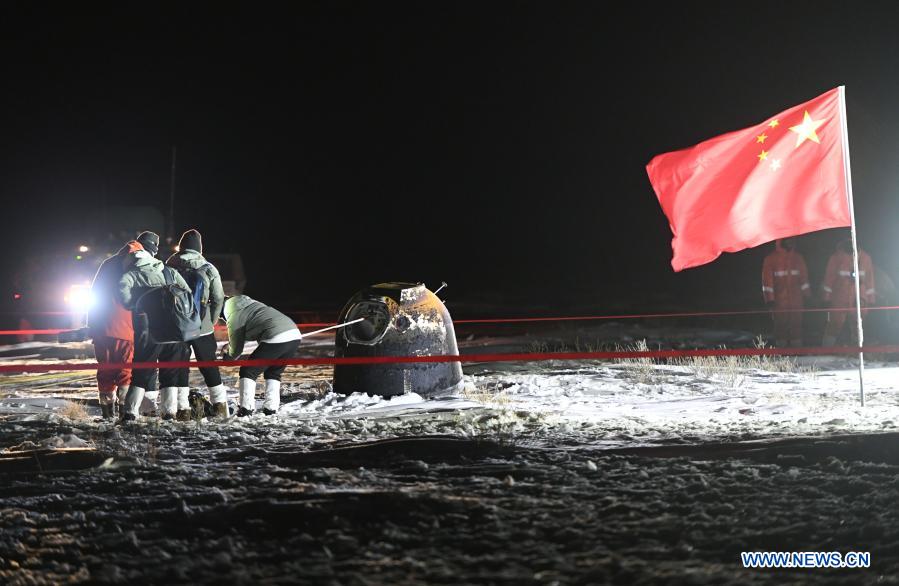
The lunar sample return marks a tremendous achievement for China and the Chinese space agency CNSA and is worthy of great pride by the Chinese people.
Chinese scientists hope to collect up to 2 kg of pristine lunar surface samples of pebbles and regolith to a depth of up to 2 meters with a drill and scoops aboard the Chang’e-5 lunar lander.
Recovery teams were quickly dispatched by helicopter and ground vehicles post touchdown, located the scorched capsule and planted a Chinese flag beside the lander to great fanfare and cheers.
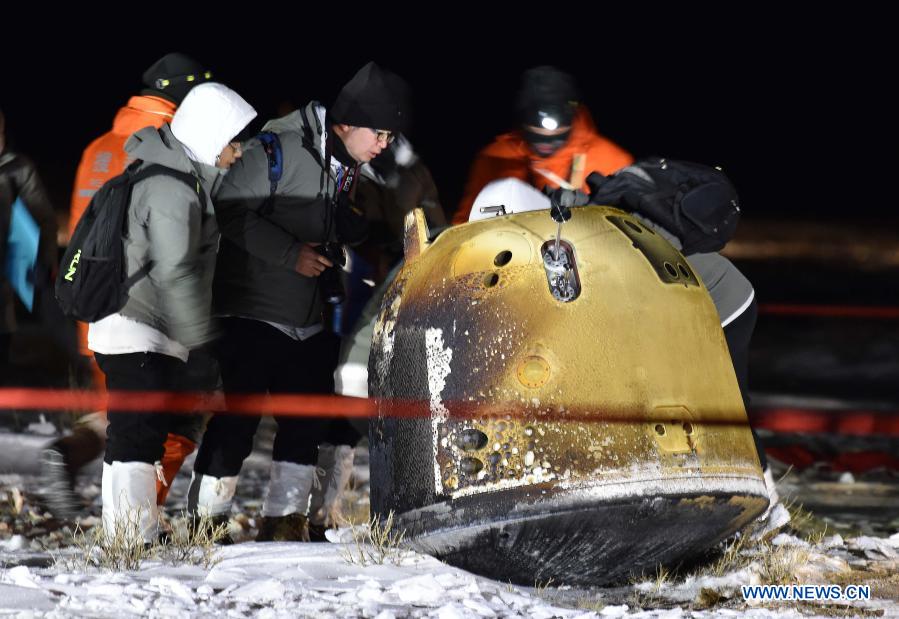
China is only the 3rd country to attempt a lunar sample return mission – following the United States and the then Soviet Union – now Russia, from Apollo manned and Luna unmanned missions in the 1960s and 1970s.
The Chang’e-5 team was soon congratulated by China’s President Xi Jinping on the complete success of the Chang’e-5 mission that brings back the country’s first samples collected from the moon, reported China’s official Xinhua news agency.
“On behalf of the Communist Party of China (CPC) Central Committee, the State Council and the Central Military Commission (CMC), Xi, also general secretary of the CPC Central Committee and chairman of the CMC, extended warm congratulations and sincere greetings to all members who participated in the Chang’e-5 mission in a congratulatory message.”
“As China’s most complicated space project the Chang’e-5 mission has achieved the extraterrestrial sampling and returning for the first time. It is another major achievement in overcoming difficulties by giving full play to the advantages of the new nationwide system, marking a great step forward in China’s space industry.
“This will contribute to deepening the understanding of the origin of the moon and the evolution history of the solar system,” Xi noted.
“Your remarkable feats will always be remembered by our country and people.”
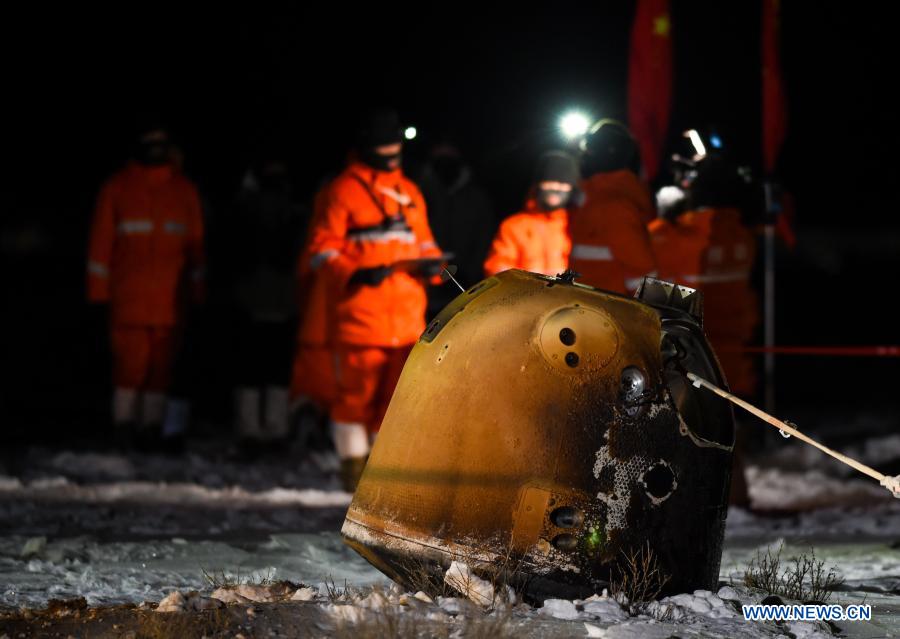
Xi also noted that “Chang’e-5 mission has achieved many major breakthroughs including China’s first lunar surface sampling and sealing, first liftoff from the moon, first rendezvous and docking in lunar orbit, and first spacecraft carrying samples to re-enter the Earth’s atmosphere.”
The success of the Chang’e-5 mission marks a conclusion of China’s current lunar exploration project, reports Xinhua.
The Chang’e-5 mission began on Nov. 23 when the Long March 5 rocket successfully hurled the 8200 kg Chang’e-5 moon mission on a fast paced 23 day long mission on China’s first ever mission to snatch lunar regolith from the Moon’s surface and send it back to eagerly awaiting scientists back on Earth landing in Inner Mongolia, China.
The Long March 5 carrier rocket lifted off at 3:30 p.m. EST (2030 GMT) Monday, Nov 23 (4:30 a.m. Nov. 24 Beijing Time) from the Wenchang Space Launch Center on Hainan Island, China on behalf of the Chinese National Space Administration (CNSA).
It achieved orbit around the Moon, Saturday, Nov. 28.
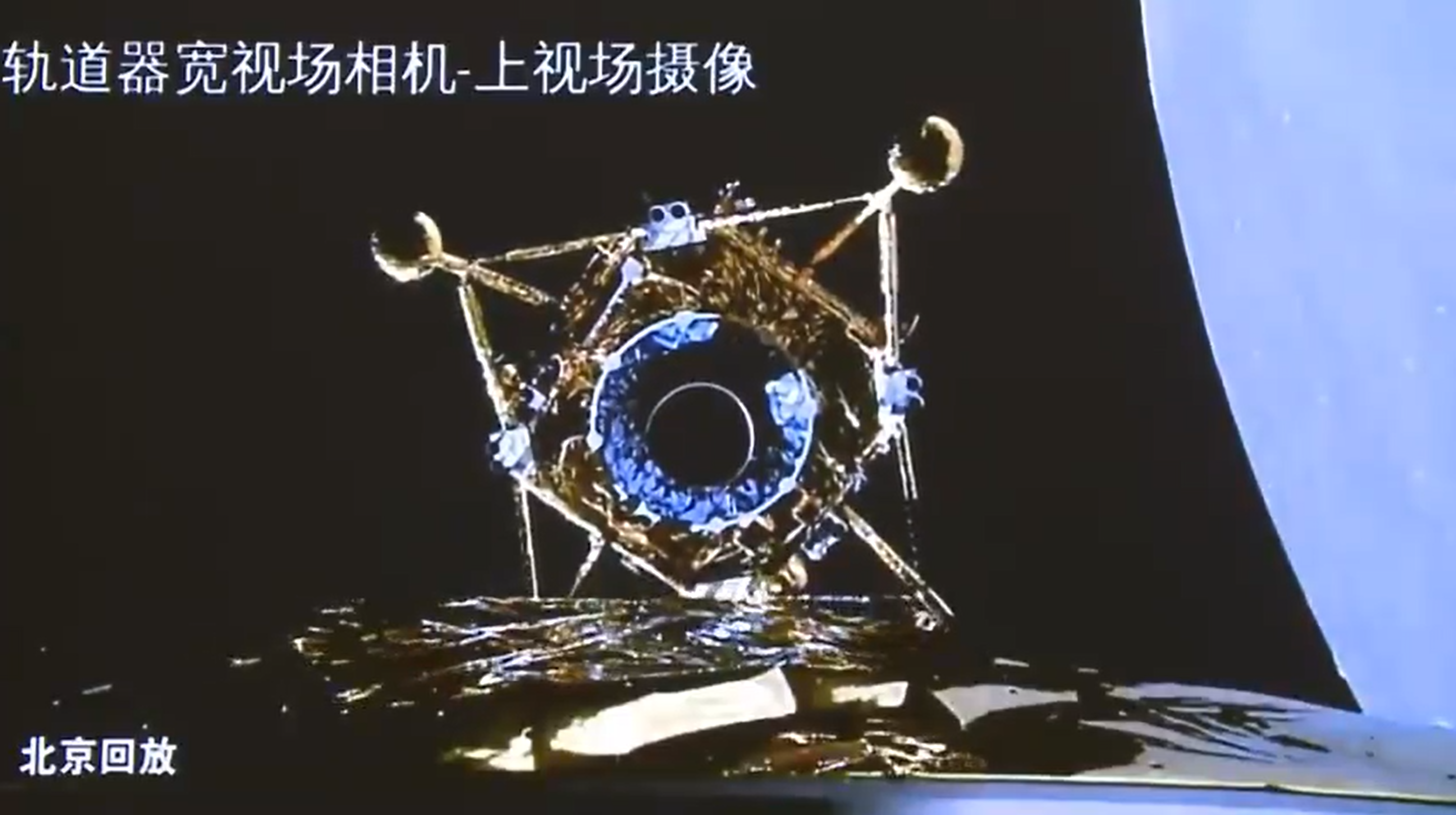
The precision guided rocket assisted lunar touchdown of the Chang’e-5 lander-ascender spacecraft combination occurred as planned at 10:11 a.m. EST (1511 GMT) 11:11 p.m . Beijing time Tuesday, Dec. 1, on the Mons Rümker region of Oceanus Procellarum or the Ocean of Storms, on a smooth volcanic plane, according to CNSA.
During the landing process, the cameras aboard the lander took images of the landing area.
Several hours post touchdown the lander transmitted a beautiful panoramic image from the lunar landing site on the surface from the Mons Rümker region of Oceanus Procellarum or the Ocean of Storms.
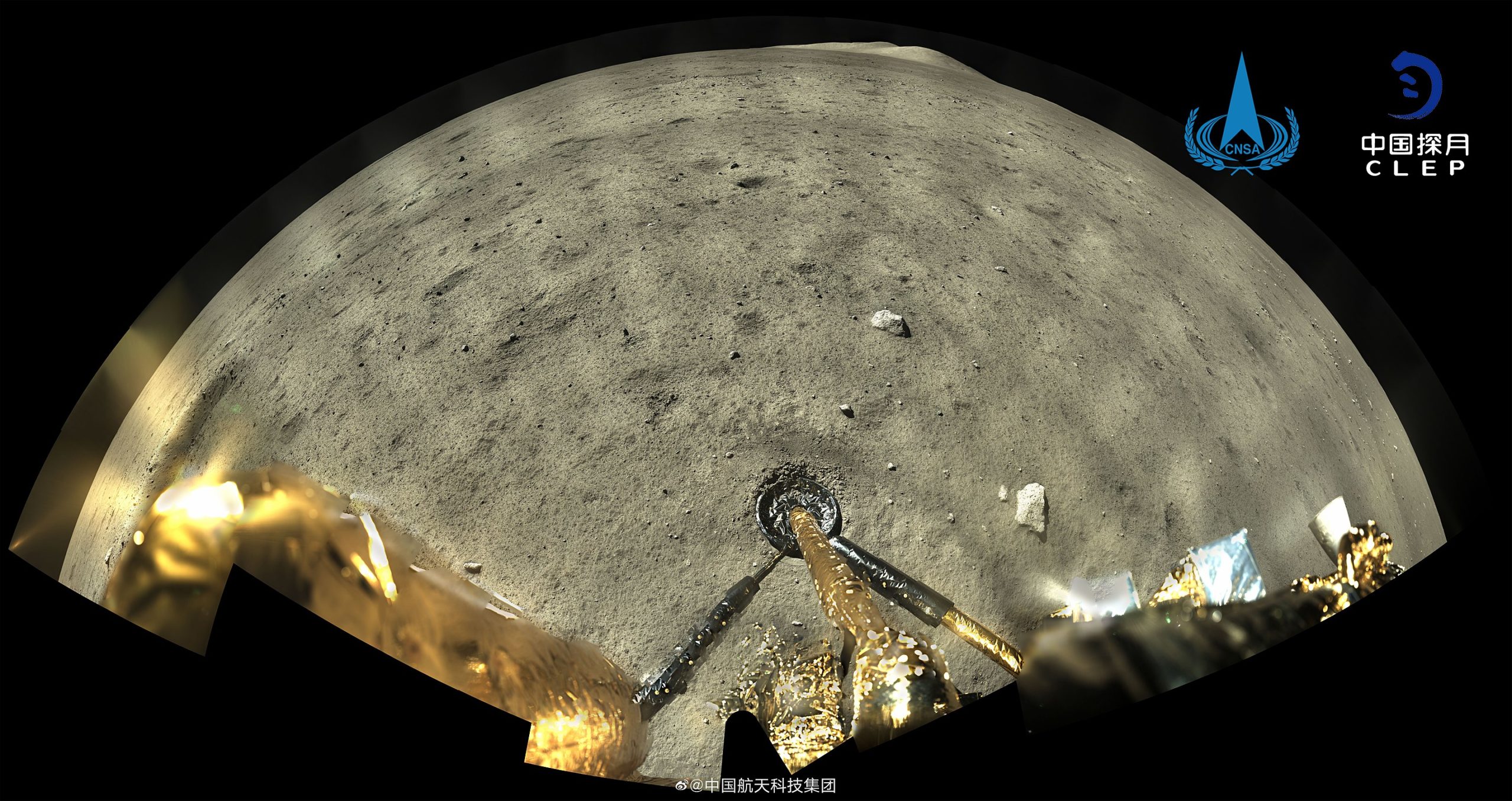
Using an onboard drill, scoop and robotic arm the solar powered robotic explorer ascender-lander component of Change’5 set to work over two days on the most challenging aspect of the mission – to collect around 2 kilograms or more of lunar dust soil and rock regolith at the landing site in a region to the north of Mons Rümker, a mountain overlooking a vast lunar mare called Oceanus Procellarum, or the Ocean of Storms, on a smooth volcanic plane on the western edge of the moon’s near side.
The goal is to return the cache of precious samples from a depth of up to 2 meters to eagerly awaiting researchers on Earth for detailed scientific analysis.
Photos released by CNSA showed the lunar surface had been dig into by the landers scoop and drill.
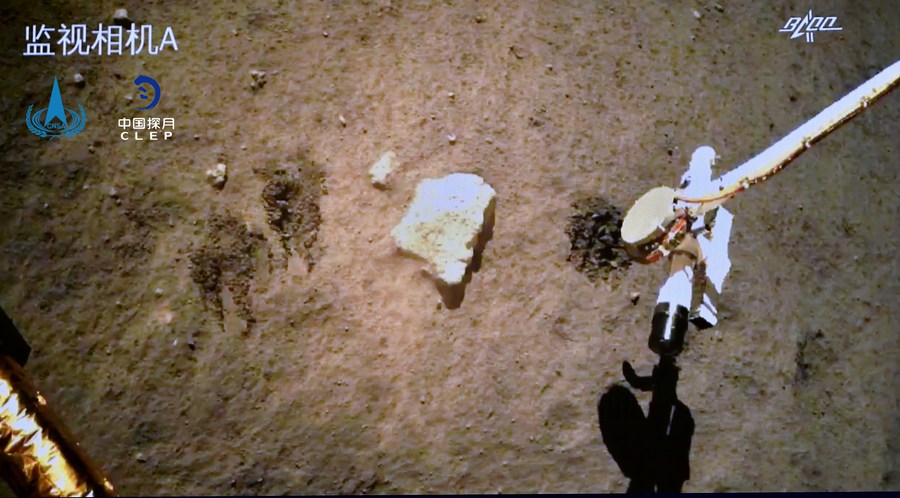
“It adopted two methods of moon sampling, including using drills to collect subsurface samples and grabbing samples on the surface with a robotic arm. It gathered diverse samples at different sites,” said CNSA.
China's Chang'e-5 probe completes sampling on the moon. It has adopted two methods, including using drills to collect subsurface samples and grabbing samples on the surface with a robotic arm. Diverse samples have been gathered. #LunarProbe #ChangE5 https://t.co/9LxFporp3e pic.twitter.com/N4snzNs77Q
— China Xinhua News (@XHNews) December 3, 2020
After two days work on the lunar surface the ascender of Chang’e-5 took off from the lunar surface and entered the preset lunar orbit on Dec.3. The ascender of Chang’e-5 probe successfully rendezvoused and docked with the orbiter-returner combination in lunar orbit, and transferred the samples to the returner on Dec. 6.
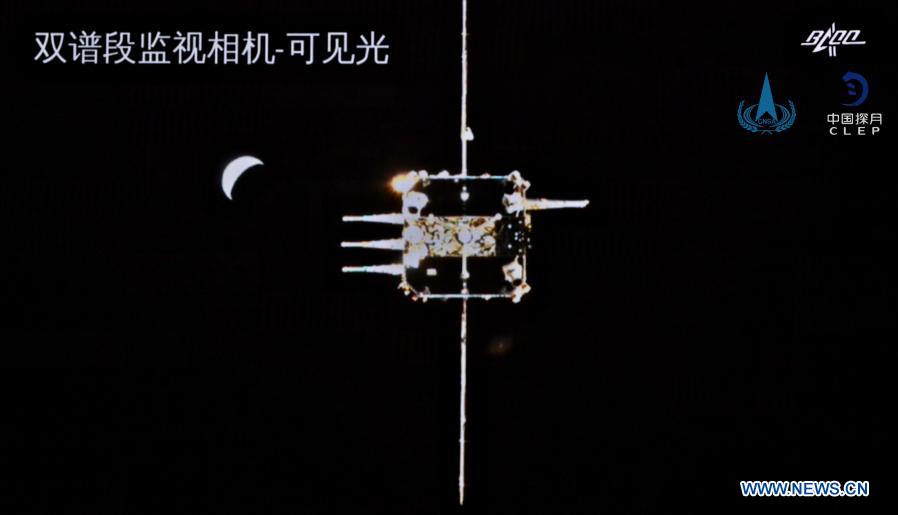
After conducting two orbital maneuvers the orbiter-returner entered the moon-Earth transfer orbit on Dec. 13. It completed two orbital correction en route to Earth.
The Chang’e-5 mission is comprised of four components: an orbiter, a lander, an ascender, and an Earth return capsule.
The samples collected could be the youngest samples retrieved from the Moon so far dating to roughly 1 billion years vs 3.1 to 4.4 billion years old for the Apollo samples.
The most recent lunar sample return mission was accomplished by the Luna 24 spacecraft launched by the then Soviet Union in 1976.
To date lunar soil and rock samples were collected and returned from 6 NASA Apollo manned moon landings and 3 Russian Luna robotic missions.
Chang’e 5 is equipped with a robotic arm with a sampling scoop, a coring drill, and a sample chamber that can return up to 4 kg of regolith. It also has a Panoramic Camera (PCAM), Lunar Regolith Penetrating Radar (LRPR), and a visible and near-infrared Lunar Mineralogical Spectrometer (LMS).
Chang’e-5 marks the next bold step in China three step lunar ambitions following on the Change’ 1 and 2 lunar orbiters and Change’ 3 and 4 landers and Yutu rovers on both the near and far side.
China became the first nation in history to land a robotic spacecraft on the far side of Earth’s Moon, when their robotic spacecraft named Chang’e 4 accomplished a soft touchdown Jan. 3, 2019 with the Yutu-2 moon rover.
The mosaic below by Ken Kremer and Marco Di Lorenzo shows the Yutu-1 moon rover at work on the lunar surface.

Earlier this year China has successfully launched its first fully indigenous mission to Mars – the extremely ambitious Tianwen-1 robotic mission designed to orbit, land and rove on the Red Planet – aimed at comprehensively investigating its climate, atmosphere and geology and search for signatures of water as well as snapping numerous images.
China utilized its most powerful rocket – the relatively new heavy-lift Long March 5 – to hurl the combination Tianwen-1 orbiter and lander mission to Mars.
The Chinese Tianwen-1 spacecraft lifted off atop the Long March 5 carrier rocket from the seaside Wenchang Space Launch Center in southern China’s Hainan province on July 23, at 12:41 a.m. EDT (0441 GMT; 12:41 p.m. Beijing time).
China eventually hopes to land the first Chinese people on the Moon at some point during the 2020s.
NASA seeks to return astronauts to the lunar surface under Project Artemis aiming to land the first woman and next man at the Moon’s South Pole by 2024
Watch Ken’s live interview on BBC World TV News on Dec. 16 about China’s successful Change’5 mission to collect lunar surface sample and soil and rock and return them to Earth safely with touchdown in inner Mongolia.
Watch Ken’s continuing reports about SpaceX Crew Dragon, Starlink, Commercial Crew and Artemis and onsite for live reporting of upcoming and recent SpaceX and ULA launches including Demo-2, Starlink, X-37B, Solar Orbiter, Mars 2020 and more at the Kennedy Space Center and Cape Canaveral Space Force Station.
Stay tuned here for Ken’s continuing Earth and Planetary science and human spaceflight news: www.kenkremer.com –www.spaceupclose.com – twitter @ken_kremer – email: ken at kenkremer.com
Dr. Kremer is a research scientist and journalist based in the KSC area, active in outreach and interviewed regularly on TV and radio about space topics.
………….
Ken’s photos are for sale and he is available for lectures and outreach events
Please consider supporting Ken’s work by donating at Patreon:
https://www.patreon.com/kenkremer

x



